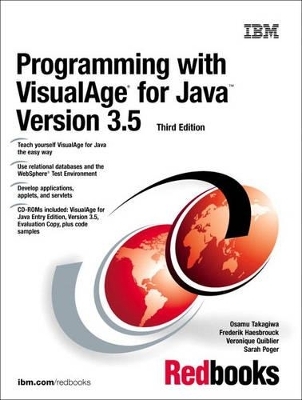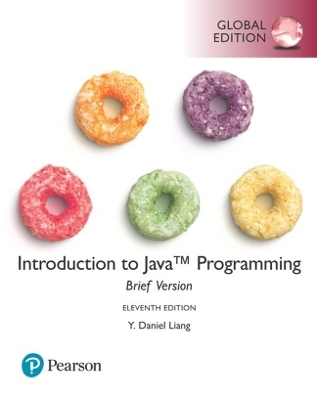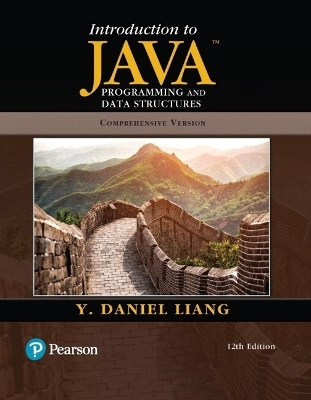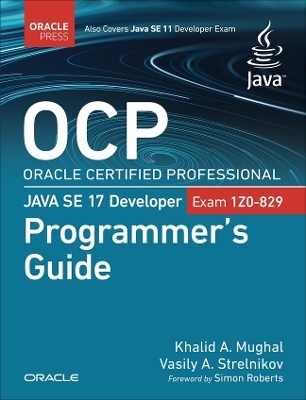
Programming With VisualAge for Java Version 3.5
IBM Press
978-0-13-066494-5 (ISBN)
- Titel ist leider vergriffen;
keine Neuauflage - Artikel merken
This IBM Redbook brings together all the information and resources developers need to create, manage, and deploy Web-based applications using IBM's powerful VisualAge for Java Professional Edition Version 3.5. Its exceptionally broad coverage encompasses servlets, JavaServer Pages, JavaBean architectures, debugging, publishing, and much more. The authors first introduce the VisualAge for Java environment, offering practical techniques for organizing complex projects. They show how to use VisualAge for Java to create servlets and JavaServer Pages; build GUI applications; integrate databases; and handle versioning and internationalization. They introduce the WebSphere Test Environment, which permits rapid development and deployment of IBM WebSphere applications; as well as Enterprise Access Builders, which permit rapid Web-enablement of legacy IBM-based systems and SAP R/3 applications.
Osamu Takagiwa, Advisory IT Specialist with the IBM International Technical Support Organization San Jose Center, teaches application development classes worldwide. Frederik Heasbrouck, an independent Java Architect based in Belgium, formerly worked for both Alcatel Bell and IBM. Veronique Quiblier, Application Development Specialist with IBM Technical Sales for EMEA, has 15 years of development experience. Sarah Poger, Programming Manager with SunGard Futures Systems in Chicago, IL, specializes in Internet application development and architecture in finance.
Figures.
Tables.
Preface.
The team that wrote this redbook. Comments welcome.
1. Introduction to the environment.
VisualAge for Java product family. Building your first applet. Building your first application. The VisualAge for Java Scrapbook. Customizing VisualAge for Java. Building your first servlet.
2. Organizing your code.
Projects in VisualAge for Java. Packages in VisualAge for Java. The Workbench. Using types from other packages. Full source code edit. Code Assists. Importing and exporting with VisualAge for Java.
3. Migrating to Java2.
The Fix/Migrate SmartGuide. The repair process. Migrating your servlet and JSPs.
4. Beginning the ATM project.
Problem domain. Building the ATM model. Overall architecture. Example implementation.
5. Creating servlets.
Overview of Java servlets. The Java Servlet API. Building the ATM application servlets.
6. Creating JSPs.
Java Server Pages. How Java Server Pages work. JSP interactions. Invoking a JSP by URL. JSP 0.91 and 1.0. Designing the JSP model. Building the ATM application.
7. Creating GUI applications.
Abstract Windowing Toolkit and Java Foundation Classes refresher. Visual Composition Editor. Working with beans in the Visual Composition Editor. Visual Programming in action.
8. Versioning your code.
Introduction to versioning. Workspace versus repository. Version control. Using editions. Import and export effects. Repository Explorer.
9. Testing and debugging the Web application.
VAJ Debugger. WebSphere Test Environment (WTE). Testing JSPs under WebSphere Test Environment. Debugging servlets and JSPs. Persistent Name Server. WebSphere Test Environment—advanced configuration. WebSphere Test Environment—multiple Web applications.
10. Using relational databases.
JDBC 2.0. Queries and result sets. Stored procedures. Updating the database. Using SQLJ inside Visual Age for Java. Data access beans. Making the ATM persistent. Making the card class persistent. Creating the Select beans. Modify beans. Data Access Beans with an application.
11. Internationalization.
Java Internationalization Framework. Internationalization in VisualAge for Java. Building a language panel. Dynamically changing the locale. Other internationalization considerations. Internationalization in the Web environment. Character codes on the Web.
12. Deploying the Web application.
Before you start. Using WebSphere Application Server. Deploying an application. Deploying an applet.
Appendix A. JSP tag syntax.
JSP tag syntax summary.
Appendix B. Using the additional material.
Locating the additional material on the Internet. Using the Web material. System requirements for downloading the Web material. How to use the Web material.
Appendix C. Special notices.
Appendix D. Related publications.
IBM Redbooks. IBM Redbooks collections. Other resources. Referenced Web sites.
How to get IBM Redbooks.
IBM Redbooks fax order form.
Glossary.
Abbreviations and acronyms.
Index.
IBM Redbooks review.
| Erscheint lt. Verlag | 27.9.2001 |
|---|---|
| Verlagsort | Armonk |
| Sprache | englisch |
| Gewicht | 1000 g |
| Themenwelt | Informatik ► Programmiersprachen / -werkzeuge ► Java |
| Mathematik / Informatik ► Informatik ► Web / Internet | |
| ISBN-10 | 0-13-066494-4 / 0130664944 |
| ISBN-13 | 978-0-13-066494-5 / 9780130664945 |
| Zustand | Neuware |
| Haben Sie eine Frage zum Produkt? |
aus dem Bereich


